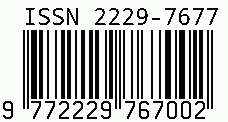
International Journal on Science and Technology
E-ISSN: 2229-7677
•
Impact Factor: 9.88
A Widely Indexed Open Access Peer Reviewed Multidisciplinary Bi-monthly Scholarly International Journal
Plagiarism is checked by the leading plagiarism checker
Call for Paper
Volume 16 Issue 3
July-September 2025
Indexing Partners



















Hybrid Predictive Maintenance for Electric Motor Bearings: Integrating Machine Learning and Physics-Based Models
| Author(s) | Sibongile Natasha Malindi, Victor Kuno |
|---|---|
| Country | Zimbabwe |
| Abstract | Predictive maintenance (PdM) is quickly revolutionizing the industrial processes, which is moving from time-based reactive technology to data-driven proactive technology in a very short period. Bearings in electric motors are important components used in a wide variety of industrial operations. Such components are prone to premature failure, loss of revenue because of downtime, and repair. The Remaining Useful Life (RUL) estimation of the bearings in electric motor is important because such a prediction assists in reducing equipment downtime, extending equipment life, and minimizing maintenance cost. Conventional methods of PdM employ machine learning (ML) models which are trained from historical data and, being black boxes, lack the physical intelligibility and robustness for the prediction of RUL, under varying operating conditions. This limitation is because only data-driven models are used and it is hard to extract the physical mechanisms of bearing damage. In this work, a systematic study on hybrid predictive maintenance frameworks for electric motor bearings is presented, which incorporates both ML and physics-based models looking to address the mentioned challenges and improve the reliability of RUL predictions. A key aspect to improve the reliability and effectiveness of predictive maintenance strategies is the precise estimation of the Remaining Useful Life (RUL) for industrial bearings. (Jiang et al., 2022; Hu et al., 2023) mentioned the NASA bearing dataset they used in the study, and a number of advanced pre-processing techniques are used, such as the statistical features (Root-Mean-Square (RMS), Peak Frequency, Kurtosis, Crest Factor), and Archard wear model as a physics-guided degradation metric [1, 2]. A Bidirectional LSTM model is trained with optimal sequence lengths for learning long-term dependencies on sensor signals, and the model is evaluated using Mean Absolute Error (MAE), Mean Squared Error (MSE), and R-squared (R²) score. Comparisons between purely data-driven models and physics-guided counterpart demonstrate better accuracy and robustness. The results indicated that the inclusion of the wear-related degradation characteristics based on Archard improved remarkably the predictive model, and the R² values are greater than 0.67, the lowest MAE is 3.96. (Wang et al., 2017; Xue et al., 2022) went on to add, trends-based features as well as correlation matrices were used to confirm that the selected inputs were reliable, strengthening the interpretability of the models and reducing those overfitting risks [3, 4]. This paper makes a novel contribution to the study of integrated applications of physics-based AI models in predictive maintenance systems in challenging environments such as industrial automation in Zimbabwe,(Liu and Zhang, 2020) proving that the integration of physics and AI can yield scalable, explainable and high-performing predictive maintenance systems [5]. |
| Keywords | BiLSTM, Deep Machine Learning, Feature Extraction, Hybrid Model, Physics-based Models, Remaining Useful Life (RUL) |
| Field | Engineering |
| Published In | Volume 16, Issue 2, April-June 2025 |
| Published On | 2025-06-18 |
| DOI | https://doi.org/10.71097/IJSAT.v16.i2.6362 |
| Short DOI | https://doi.org/g9qqxn |
Share this


CrossRef DOI is assigned to each research paper published in our journal.
IJSAT DOI prefix is
10.71097/IJSAT
Downloads
All research papers published on this website are licensed under Creative Commons Attribution-ShareAlike 4.0 International License, and all rights belong to their respective authors/researchers.

